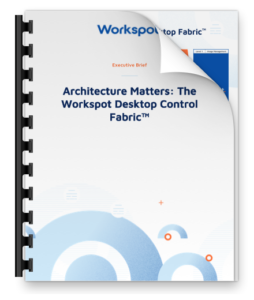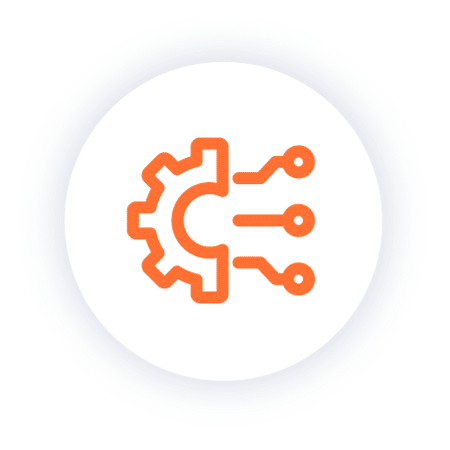Getting Started: The Journey to a Cloud PC-Enabled Adaptive Enterprise
By Matthew Davidson and Michael Keen
Adaptive enterprises are built, not bought. It is a transformational process. Every enterprise arrives at the task of transforming itself with a different history, differing goals and priorities, and different transformational needs. Accordingly, every enterprise has a unique path with a unique set of steps. The journey to the “Cloud PC-Enabled Adaptive Enterprise” begins with a thorough understanding of what your enterprise looks like today.
Here are some key questions to ask yourself about your business:
- What are your critical business priorities and strategies?
- What are the strengths and weaknesses of your people, processes, and technologies?
- Where in the organization are you more-or-less agile today – and where do you want to be as a result of transformation?
- Where is your technology budget currently spent? What percentage goes to maintaining the legacy desktop virtualization and application delivery solution and its related infrastructure? What percentage is innovation?
- How does the business view the technology group, and why? Are they viewed as a strategic business partner?
These questions and others should be asked within the context of an assessment process, and the answers will help you develop an important foundational understanding of the state of your enterprise. You can’t build a house without a solid foundation. The same principle applies to the Cloud PC-Enabled Adaptive Enterprise.
Three Dimensions of Agility
This assessment should consider three distinct dimensions of agility. These are critical not only for the larger enterprise, but also for understanding how to leverage the capabilities that Cloud PCs can potentially deliver to the organization within these dimensions.
The dimensions are:
- Time – this dimension considers the speed at which your organization can promote, enable, and react to change. How quickly can you make the necessary changes that are triggered by your business decisions? How well can your organization keep pace with the rate of change in your industry?
- Range – this dimension considers how you implement change across your business, whether across processes, organizations, or technologies. Do you have to limit the initial implementation of those changes to a certain geography, and then roll them out across the enterprise? Can you do it worldwide from the start?
- Ease – this dimension considers the level of effort and cost required to introduce or support change. How effectively are you taking advantage of the enablers of change that are arising in the marketplace? You may have been able to merge all your corporate directories to streamline processes, but if you had to rely extensively on expensive contractors and have exhausted your own personnel in the process, the effort was far from easy, even though you were able to accomplish it.
Let’s dive a bit deeper into these dimensions and how they apply to the Cloud-PC-Enabled Adaptive Enterprise.
Dimension 1: Time
We live and work in a world of change. To thrive in that world, we must be able to embrace change quickly, thoroughly, and efficiently. At the heart of a Cloud PC-Enabled Adaptive Enterprise is the understanding that the business and the technology group must be synchronized—that is, they must become aligned and stay aligned—for the enterprise to capitalize on change. A business decision—whether for a new product or service, more rapid introduction of new products, adoption of a new product or service delivery modality, or any other decision—triggers a series of technology changes. The challenge is to ensure that those technology events occur as quickly as the business decision-makers need them to occur—and that is where most organizations fall short.
With a multi-cloud-oriented architecture that allows our customers to deliver Cloud PCs from any cloud (e.g., Azure™, Google Cloud™, and AWS™), Workspot delivers on the challenge of providing compute resources as fast as possible, sometimes within minutes! How? We have created a completely new architecture from the ground-up that is required. Older architectures require the virtual desktop infrastructure (VDI) stack to be copied to every cloud region, and installing and operating 50+ copies of a complex stack is not possible. A cloud-native, globally distributed architecture that allows horizontal scalability across cloud regions in minutes is required. This new architecture, invented by Workspot™, is the foundation for how technology groups deliver the right resources to the right people, when and where they need them.

Dimension 2: Range
Above, we described range as how you implement change across your business, whether across processes, organizations, or technologies. Many organizations we encounter are still taking a “single cloud – single region” approach when deploying a Cloud PC solution. Which is absolutely OK, but what about the “black swan” event-driven changes that happen? These events, which are difficult to predict, are often random and unexpected, and greatly impact the normal course of business. They are considered outlier events, because there is no past data that can predict their occurrence in the foreseeable future. Therefore, the ability to implement a solution across the business that is global in scope would be difficult with legacy virtual desktop solutions.
With Workspot’s Control Plane, global scope, and multi-cloud capability, our customers can deliver Cloud PCs and cloud workstations to users worldwide, in a matter of minutes:

Dimension 3: Ease
As we mentioned, ease means “the amount of work and funds needed to bring about or support a change.” Here is where the turnkey approach and a close strategic partnership with Workspot makes the journey to delivering cloud PCs and cloud workstations almost weightless, drastically reducing the workload of the technology group staff. Today, the majority of legacy desktop virtualization deployments were built via the Do-It-Yourself (DIY) approach. With this DIY approach, the technology group is responsible for everything in blue, and the vendor provides the yellow boxes:

With the turnkey approach, Workspot relieves your burden and headaches by providing everything in the orange boxes:

Unlike other solutions, with Workspot there is no need to rely on expensive contractors and exhausting your own personnel in the process of moving your desktop workload to the cloud. Workspot is with you as your trusted partner from the get-go; we don’t just instruct you download a manual and walk away.
As part of the ease of Workspot, our objective is for you to realize the value of your purchase as soon as possible, while also preparing your team to manage the solution and scale as needed. Included with your Workspot subscription is up to 90 days of Go Live Deployment Services. These services, conducted by our Customer Success experts, deliver the fastest time-to-value in the industry and ensure your overall deployment success. We work alongside your team to take cloud PCs live for your first set of users. This initial deployment can take as little as a day, and usually involves a subset of users whose user acceptance testing and overall satisfaction will prove the value of your Workspot investment. Custom Deployment Services are also available that go beyond the scope of the initial Go Live Deployment Services if you ever need them.
There are eight elements to Go-Live Deployment Services:
- Dedicated Workspot experts, including a Customer Success Project Manager and a Customer Success Architect, who are assigned to your project. Together with your designated team members, they identify desired business outcomes, establish project milestones, and guide your cloud PC implementation to success.
- Project kickoff, where the implementation team defines the requirements for your first use case, and establishes a timeline for the 90-day Go Live Services phase, in accordance with your implementation success criteria.
- Customer onboarding includes creating your account for the Workspot Control tenant and a series of training sessions on Workspot Control, the web-based admin console used by your IT team to manage your implementation globally. Training sessions are recorded and accessible to you at any time.
- Deployment configuration, where we work side-by-side with your team to configure your Cloud PC environment, and establish connectivity between the Workspot Enterprise Desktop Cloud service and your production IT environment.
- Template validation, where the Workspot Customer Success implementation team helps you decide if you’ll use an existing corporate image or build a cloud-optimized marketplace image.
- Implementing your Multi-Factor Authentication (MFA) and Identity Provider (IdP) integration. We understand that securing your Cloud PC environment is everything, so we work with you to implement and validate your authentication and authorization methods.
- End-user testing. We believe user satisfaction is the ultimate test of success, and user acceptance testing (UAT) is an important part of the deployment process. During UAT, our Customer Success team helps you optimize your environment to achieve peak performance for your end-users.
- Documentation and training. As stated above, we don’t just leave you with a manual and say goodbye. We provide you with the platform documentation to help your technology group when they are ready to take over the production environment. In addition, we recommend taking advantage of the two-day training course included with your Workspot subscription.
To complete the ease definition, enterprises today should expect seamless access to cloud desktops from anywhere, at any time, through any device – as well as outstanding performance, without giving a moment’s thought to if or how it will work. This is utility computing, and there is no reason to settle for anything less. Technology teams can expect rapid Cloud PC provisioning, seamless template updates, and accelerated expansion to new use cases across multiple cloud platforms and regions worldwide.
Workspot’s highly sophisticated instrumentation, root cause analysis, and blast radius analysis identify problems proactively and in real-time, so they can be resolved as quickly as possible. Instead of needing to know how it all functions, admins can be confident that they have a proven, enterprise-ready, cloud desktop delivery solution that simply works. More than just a high-performance desktop deployment architecture, Workspot Control takes cloud desktops to a new level. Desktop virtualization has been transformed into a global, elastic utility for end-user computing.
In Summary
A Cloud PC-Enabled Adaptive Enterprise epitomizes the enterprise designed to succeed in a changing world—to innovate in response to or in anticipation of change. In essence, being an adaptive enterprise is about timely and affordable technology group support for business innovation. Becoming more adaptive helps you achieve greater simplicity, agility, and value across your business, and enables your entire organization—not just your technology group—to be more efficient and effective. Imagine adding partners to your supply chain securely in minutes instead of days or months; doubling the pace of new product introductions without sacrificing quality; or shifting your investment dollars from infrastructure maintenance to innovation. These are the types of significant gains achieved by a Cloud PC-Enabled Adaptive Enterprise.
Becoming a Cloud PC-Enabled Adaptive Enterprise helps you address core business needs—to maximize return, mitigate risk, improve performance, and increase agility. By working together to create an environment in which you can truly synchronize the business and the technology group, we create an enterprise that can adapt to change, create new opportunities, and capitalize upon rapidly changing market conditions—all of which puts you in a singularly powerful position to deliver value, compete, and win in a rapidly changing world.



